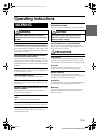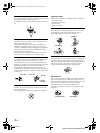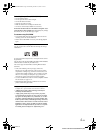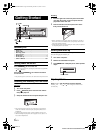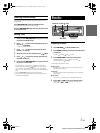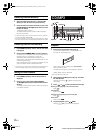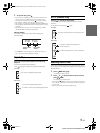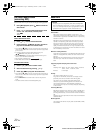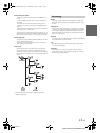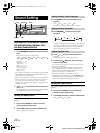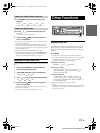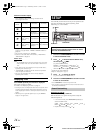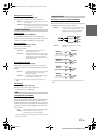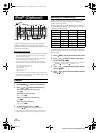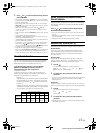
10-EN
01GB04CDE9870.fm
ALPINE CDE-9870 68-05946Z88-A (EN)
File/Folder Name Search
(concerning MP3)
Folder and file names may be searched and displayed during playback.
1
During MP3 playback, press /ESC to activate the
search mode.
2
Press or to select Folder Name Search mode
or File Name Search mode, and then press
//ENT.
Folder Name Search mode
3
Press or to select the desired folder.
4
Press and hold //ENT for at least 2 seconds to
play back the first file in the selected folder.
• Press and hold /ESC for at least 2 seconds in the search mode to
cancel. Or, the search mode is canceled if no operation is performed
for 10 seconds.
• To search for files in the Folder Name Search mode, press
//ENT. Files in the folder may be searched.
• Press AUDIO/RTN to exit Folder Name Search mode in step 3 in
order to select File Name Search mode.
• The root folder is displayed as “ ”.
• Folder Name Search cannot be made during M.I.X. play.
File Name Search mode
3
Press 1 or 2 to select another Folder.
4
Select the desired file by pressing or .
5
Press //ENT to play back the selected file.
• Press and hold /ESC for at least 2 seconds in the search mode to
cancel. Or, the search mode is canceled if no operation is performed
for 10 seconds.
• Press AUDIO/RTN in the search mode to return to the previous
mode.
• File Name Search cannot be made during M.I.X. play.
About MP3
What is MP3?
MP3, whose official name is “MPEG-1 Audio Layer 3,” is a
compression standard prescribed by the ISO, the International
Standardization Organization and MPEG which is a joint activity
institution of the IEC.
MP3 files contain compressed audio data. MP3 encoding is
capable of compressing audio data at extremely high ratios,
reducing the size of music files to as much as one-tenth their
original size. This is achieved while still maintaining near CD
quality. The MP3 format realizes such high compression ratios
by eliminating the sounds that are either inaudible to the human
ear or masked by other sounds.
Method for creating MP3 files
Audio data is compressed by using MP3 specified software. For
details on creating MP3 files, refer to the user’s manual for that
software.
MP3 files that can be played back by this device have the file
extension “mp3.” Files with no extension cannot be played
back.
Supported playback sampling rates and bit rates
MP3
ID3 tags
This device supports ID3 tag v1 and v2.
If tag data is in an MP3 file, this device can display the title
(track title), artist name, and album name ID3 tag data.
This device can only display single-byte alphanumeric
characters (up to 30 for ID3 tags) and the underscore. For
non-supported characters, “NO SUPPORT” is displayed.
The tag information may not be correctly displayed, depending
on the contents.
Producing MP3 discs
MP3 files are prepared, then written to a CD-R or CD-RW using
CD-R writing software. A disc can hold up to 510 files/folders
(including Root Folders), and the maximum number of folders is
255.
Playback may not be performed if a disc exceeds the limitations
described above.
Media supported
The media that this device can play back are CD-ROMs, CD-Rs,
and CD-RWs.
CAUTION
Except for private use, duplicating audio data (including MP3
data) or distributing, transferring, or copying it, whether for free
or for a fee, without permission of the copyright holder is strictly
prohibited by the Copyright Act and by international treaty.
Sampling rates: 48 kHz, 44.1 kHz, 32 kHz, 24 kHz, 22.05 kHz,
16 kHz, 12 kHz, 11.025 kHz, 8 kHz
Bit rates: 8 - 320 kbps
01GB00CDE9870.book Page 10 Wednesday, October 11, 2006 7:27 PM




